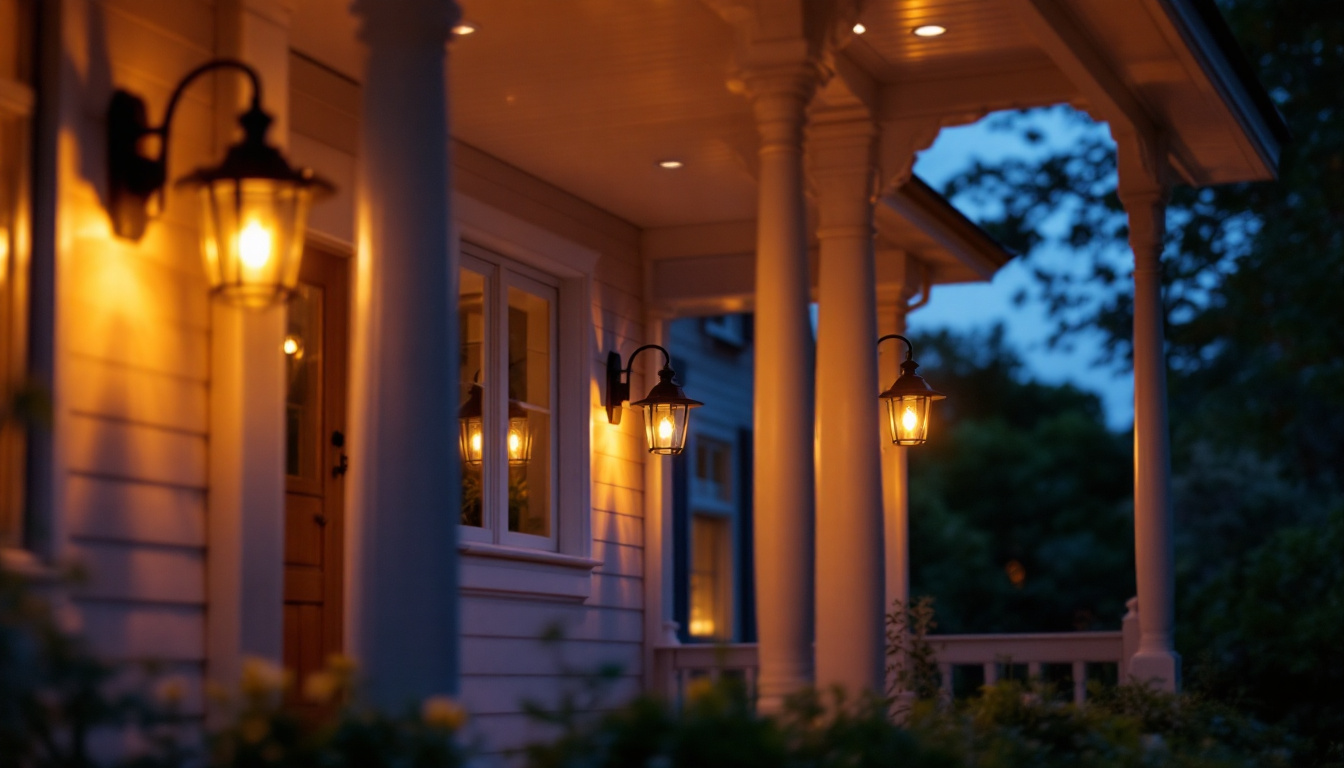
In the ever-evolving landscape of the lighting industry, the importance of understanding how to replace fluorescent tube light bulbs cannot be overstated. As energy efficiency and sustainability become paramount, the role of lighting contractors is increasingly significant. This article delves into the step-by-step process of replacing fluorescent tube light bulbs and explores the broader implications within the lighting sector.
Fluorescent tube lights have been a staple in commercial and industrial lighting for decades. Their efficiency and longevity make them a popular choice for various applications, from office buildings to retail spaces. However, as technology advances, the need for replacement and maintenance becomes critical.
Fluorescent tube lights consist of several key components: the tube itself, the ballast, and the starter. The tube contains a gas that emits ultraviolet light when electrified, which then excites a phosphor coating on the inside of the tube to produce visible light. The ballast regulates the current flowing to the tube, while the starter helps initiate the lighting process.
Understanding these components is crucial for lighting contractors, as it helps diagnose issues and ensures proper replacement procedures are followed. A malfunctioning ballast or starter can lead to flickering lights or, worse, complete failure of the lighting system. Additionally, the choice of tube length and type, such as T8 or T5, can significantly affect both the intensity and quality of light produced, making it essential for contractors to stay informed about the latest advancements in fluorescent technology.
Regular maintenance of fluorescent lighting systems is essential for optimal performance. Over time, the efficiency of fluorescent tubes diminishes, leading to reduced light output and increased energy consumption. By replacing tubes at the right intervals, contractors can ensure that their clients benefit from consistent lighting quality and lower energy bills.
Moreover, proper maintenance can extend the lifespan of other components, such as the ballast. This proactive approach not only enhances the lighting experience but also builds trust with clients who appreciate the value of well-maintained systems. Furthermore, implementing a routine check-up schedule can help identify potential issues before they escalate into costly repairs. This includes inspecting the physical condition of the tubes, ensuring that the fixtures are clean and free from dust, and checking the electrical connections for any signs of wear or corrosion. Such diligence not only improves the reliability of the lighting system but also contributes to a safer working environment, reducing the risk of electrical hazards associated with faulty lighting systems.
Before embarking on the replacement of fluorescent tube light bulbs, it is essential to gather the necessary tools and take appropriate safety precautions. This preparation ensures a smooth and efficient process, minimizing the risk of accidents or damage.
The tools required for replacing fluorescent tube bulbs are relatively simple and can typically be found in any electrician’s toolkit. Essential items include:
Having these tools on hand not only promotes safety but also enhances efficiency. A well-prepared contractor can complete the task more quickly and effectively, minimizing downtime for the client. In addition to these basic tools, a sturdy work surface or a tool belt can help keep everything organized and within reach, further streamlining the replacement process. It’s also beneficial to have a trash bag or container handy for disposing of old bulbs, as this not only keeps the workspace tidy but also ensures that broken glass is safely contained.
Safety should always be the top priority when working with electrical components. Before starting the replacement process, contractors should ensure that the power to the lighting fixture is turned off. This can be done by switching off the circuit breaker or removing the fuse associated with the lighting circuit.
Additionally, using a voltage tester to confirm that no electricity is flowing to the fixture is a critical step. This precaution helps prevent electrical shocks, which can lead to serious injuries. Wearing gloves and goggles further protects against potential hazards, such as broken glass from the fluorescent tubes. It’s also advisable to inspect the workspace for any potential tripping hazards, such as loose cords or clutter, which can lead to falls while on a ladder. Furthermore, if working in a commercial setting, it may be necessary to inform others in the vicinity that maintenance is taking place, ensuring that no one inadvertently turns the power back on while work is being performed.
Replacing fluorescent tube light bulbs is a straightforward process when approached methodically. By following these steps, lighting contractors can ensure a successful replacement every time.
The first and most crucial step is to turn off the power to the lighting fixture. This can be done by switching off the circuit breaker or removing the appropriate fuse. Always double-check with a voltage tester to ensure that the power is indeed off before proceeding.
To remove the old fluorescent tube, gently rotate it a quarter turn to release it from the fixture. Depending on the fixture design, this may involve pressing down slightly or lifting the tube upwards. Be cautious, as the glass can be fragile and may break if handled roughly.
Once the tube is free, carefully set it aside in a safe location. Proper disposal of old fluorescent tubes is essential, as they contain small amounts of mercury, which can be hazardous to the environment. Many localities have specific guidelines for recycling or disposing of fluorescent bulbs, so it is advisable to follow these regulations.
With the old tube removed, it is time to install the new fluorescent tube. Align the pins of the new tube with the slots in the fixture and gently push it into place. Once seated, rotate the tube a quarter turn to secure it. Ensure it is firmly in place to avoid flickering or failure.
After installing the new tube, it is a good practice to inspect the fixture for any signs of damage or wear, particularly around the ballast and starter. If any issues are detected, addressing them promptly can prevent future problems and enhance the longevity of the lighting system.
Once the new tube is securely in place, restore power to the fixture by switching the circuit breaker back on or replacing the fuse. It is important to test the new installation by turning on the lights to ensure everything functions correctly. If the light does not illuminate, it may indicate a problem with the ballast or starter, which may need further investigation.
As the lighting industry evolves, there is a growing emphasis on energy-efficient solutions. Fluorescent tubes, while still prevalent, are gradually being replaced by LED technology due to their superior energy efficiency and longer lifespan.
LED lights consume significantly less energy than traditional fluorescent tubes, which translates to lower electricity bills for clients. Additionally, LED bulbs have a much longer lifespan, often lasting up to 25,000 hours or more compared to the 7,000 to 15,000 hours typical of fluorescent tubes.
Furthermore, LED lighting is more environmentally friendly, as it does not contain hazardous materials like mercury. This shift towards LED technology not only benefits the environment but also aligns with global sustainability goals, making it an attractive option for both contractors and clients.
As the demand for energy-efficient lighting solutions increases, lighting contractors must adapt to market trends by expanding their knowledge and skills related to LED installations. Understanding the nuances of LED technology, including compatibility with existing fixtures and the differences in color temperature and brightness, is essential for providing clients with the best solutions.
Moreover, staying informed about new products and advancements in lighting technology can help contractors remain competitive in a rapidly changing industry. This adaptability will not only enhance their service offerings but also build client trust and loyalty.
The importance of knowing how to replace fluorescent tube light bulbs extends beyond the immediate task at hand. It reflects a broader understanding of the lighting industry and the need for ongoing maintenance and adaptation to new technologies. As energy efficiency and sustainability take center stage, lighting contractors play a vital role in guiding clients through these transitions.
By mastering the replacement process and embracing the shift towards LED solutions, contractors can ensure their services remain relevant and valuable. The future of lighting maintenance lies in a commitment to quality, safety, and environmental responsibility, making it imperative for professionals in the field to stay informed and proactive.
Ultimately, the ability to replace fluorescent tube light bulbs effectively is just one aspect of a larger skill set that lighting contractors must develop. As the industry continues to evolve, so too must the knowledge and practices of those who work within it. Embracing change and prioritizing client satisfaction will pave the way for success in the lighting industry.
Ready to elevate your lighting game? At LumenWholesale, we provide lighting contractors with the highest quality, spec-grade lighting products at unbeatable wholesale prices. Say goodbye to local distributor markups and hello to a vast selection of reliable lighting solutions that meet the most rigorous industry standards. Whether you’re transitioning to energy-efficient LED technology or simply replacing fluorescent tubes, our products ensure peak performance for all your projects. Plus, with free shipping on bulk orders, you can stock up on premium lighting without any hidden fees. Don’t compromise on quality or value—choose LumenWholesale for the perfect blend of affordability and convenience. Wholesale Lighting at the Best Value is just a click away.

Discover the must-know essentials for lighting contractors when selecting and installing porch hanging lights.

Discover essential tips and best practices for lighting contractors on installing outdoor LED ceiling lights.

Discover essential tips and best practices for lighting contractors working with fluorescent drop ceiling light fixtures.

Explore the advantages and drawbacks of sourcing industrial lighting products in Sanford, Florida, tailored for lighting contractors.